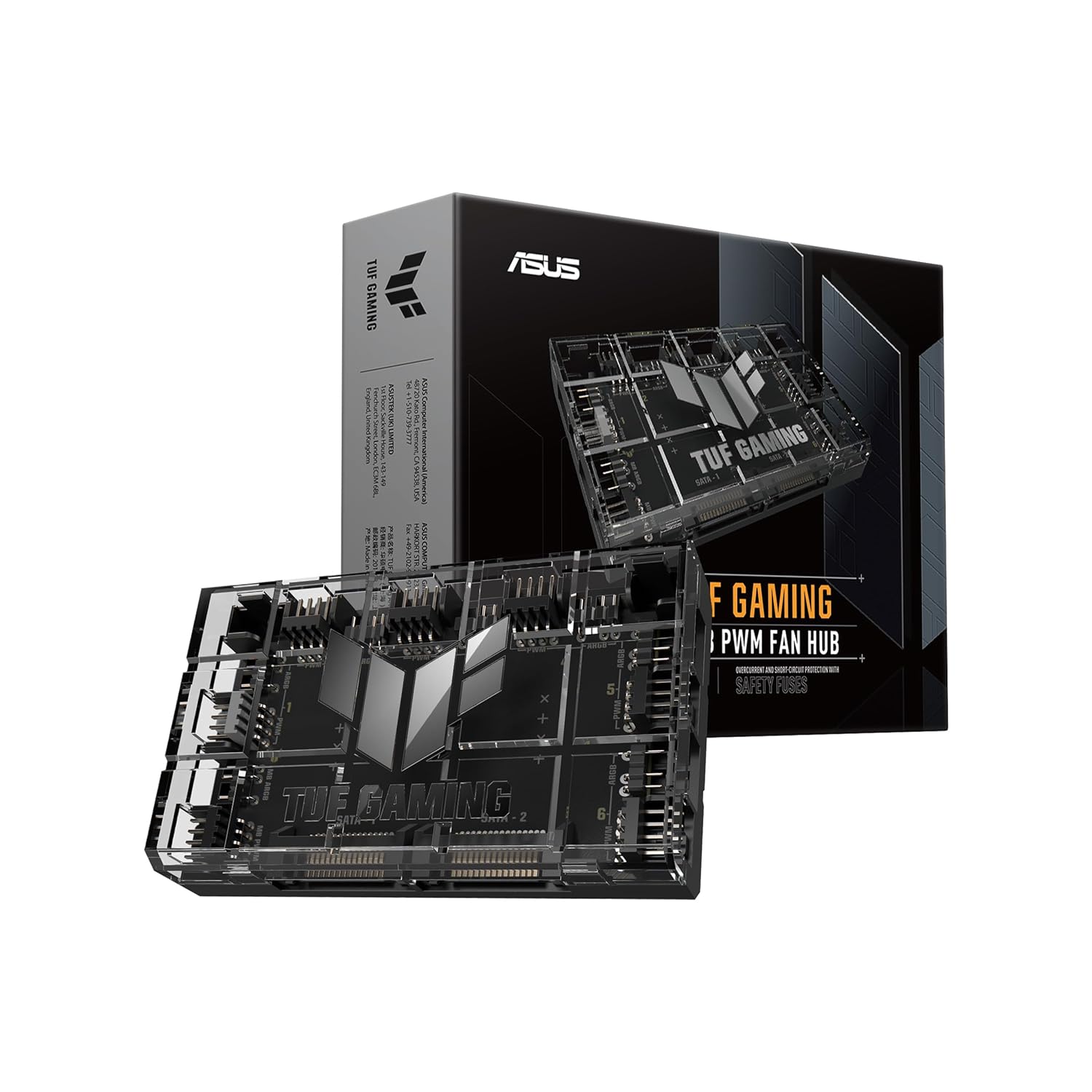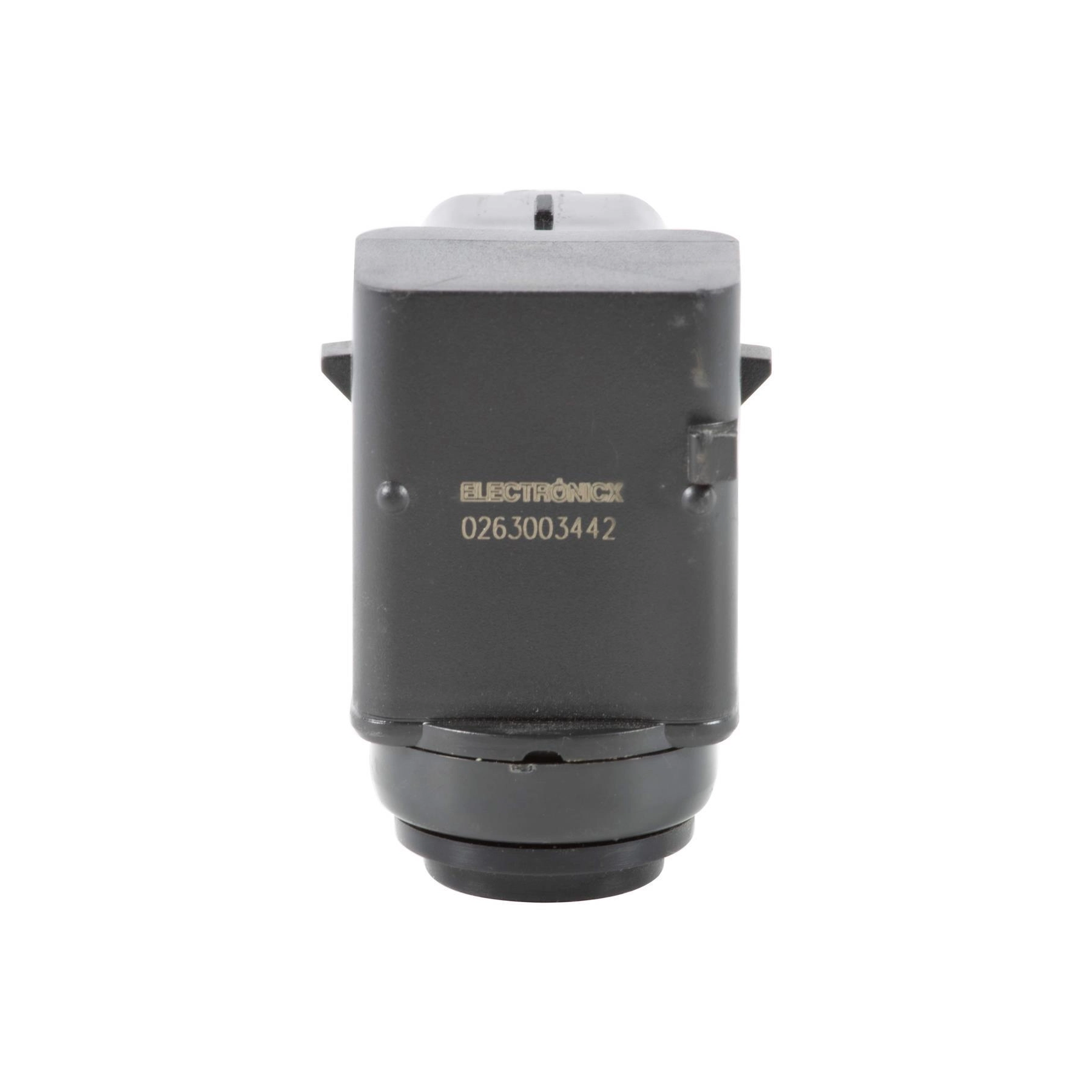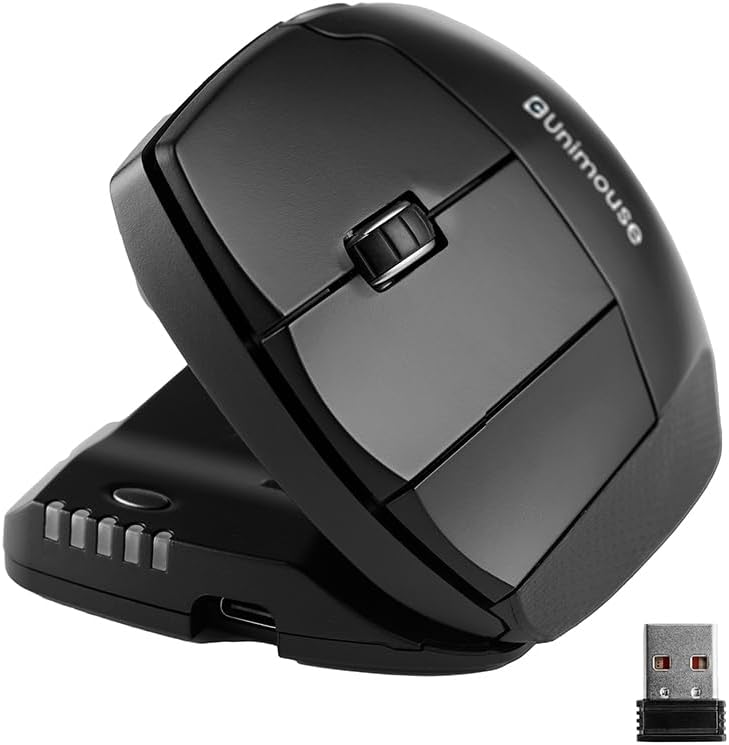Managing multiple fans and RGB lighting in a modern PC build can be a tangle of cables, confusing headers, and uneven performance. Without a centralized solution, each fan demands its own motherboard header, and lighting synchronization often requires extra controllers—complicating both installation and software configuration.
In this article, we’ll explore how the ASUS TUF Gaming ARGB PWM Fan Hub addresses these challenges by consolidating up to eight PWM fan connections and eight ARGB channels into a single, easy-to-install hub. We’ll delve into its design and build quality, break down its key features and performance benefits, walk through a step-by-step installation and software setup, examine real-world cooling and lighting benchmarks, share advanced customization techniques, and conclude with actionable recommendations. By the end, you’ll see why this fan hub is an essential component for any enthusiast seeking clean cable management, precise fan control, and unified ARGB effects.
Shop ASUS TUF Gaming ARGB PWM Fan Hub

Why a PWM Fan Hub Matters
As PC systems grow more complex—multiple high-static-pressure radiator fans, chassis intake/exhaust fans, and decorative RGB strips—motherboard headers quickly become overburdened. Modern motherboards typically offer only four to six fan headers and two ARGB on-board connectors. Exceeding those limits forces users to choose between performance and aesthetics. A dedicated PWM fan hub solves this by aggregating fan power and control signals, allowing up to eight PWM fans to draw power directly from a single SATA or Molex connector, while still preserving individual speed control via your motherboard’s fan curve settings.
Furthermore, synchronizing ARGB lighting across multiple fans and strips can necessitate proprietary controllers from various vendors. The ASUS TUF fan hub integrates seamlessly with Aura Sync, consolidating up to eight ARGB devices under one header. This eliminates the need for extra cables running to the motherboard’s limited 3-pin 5V ARGB header and avoids lighting desync issues when mixing components from different manufacturers.
By centralizing both fan and lighting connections, this hub simplifies cable routing, reduces clutter, and ensures consistent thermal and visual performance across your entire system. It also offloads current draw from the motherboard headers, protecting them from potential overcurrent damage.
Design and Build Quality
The ASUS TUF Gaming ARGB PWM Fan Hub features a compact, low-profile PCB housed within a reinforced ABS enclosure, measuring just 90 mm × 50 mm × 15 mm. The matte-black case complements most build themes, and the six integrated mounting points align with standard chassis standoff locations, ensuring secure attachment behind the motherboard tray or within a dedicated accessory bracket.
Internally, the hub employs robust MOSFET drivers rated for up to 2 A per channel, allowing each PWM fan port to supply ample current for high-speed or high-static-pressure fans. The ARGB channels use level-shifting circuitry to guarantee a stable 5 V signal across all eight outputs, preventing voltage drop and color-shifting when multiple LED strips or fans are connected.
All ports are clearly labeled: eight 4-pin PWM fan slots, eight 3-pin ARGB ports, one 4-pin 12 V SATA power input, a 3-pin 5 V ARGB input, and a 4-pin PWM input from the motherboard. The included sleeved cables—one 50 cm SATA-to-PWR connector, one 30 cm 4-pin PWM input cable, and one 20 cm 3-pin ARGB input cable—feature flexible, minimal-bulk sleeving to ease routing through tight chassis channels.
This thoughtful design ensures you’ll enjoy reliable, long-term operation, even under the strain of multiple high-draw fans and extensive lighting configurations.
Shop ASUS TUF Gaming ARGB PWM Fan Hub
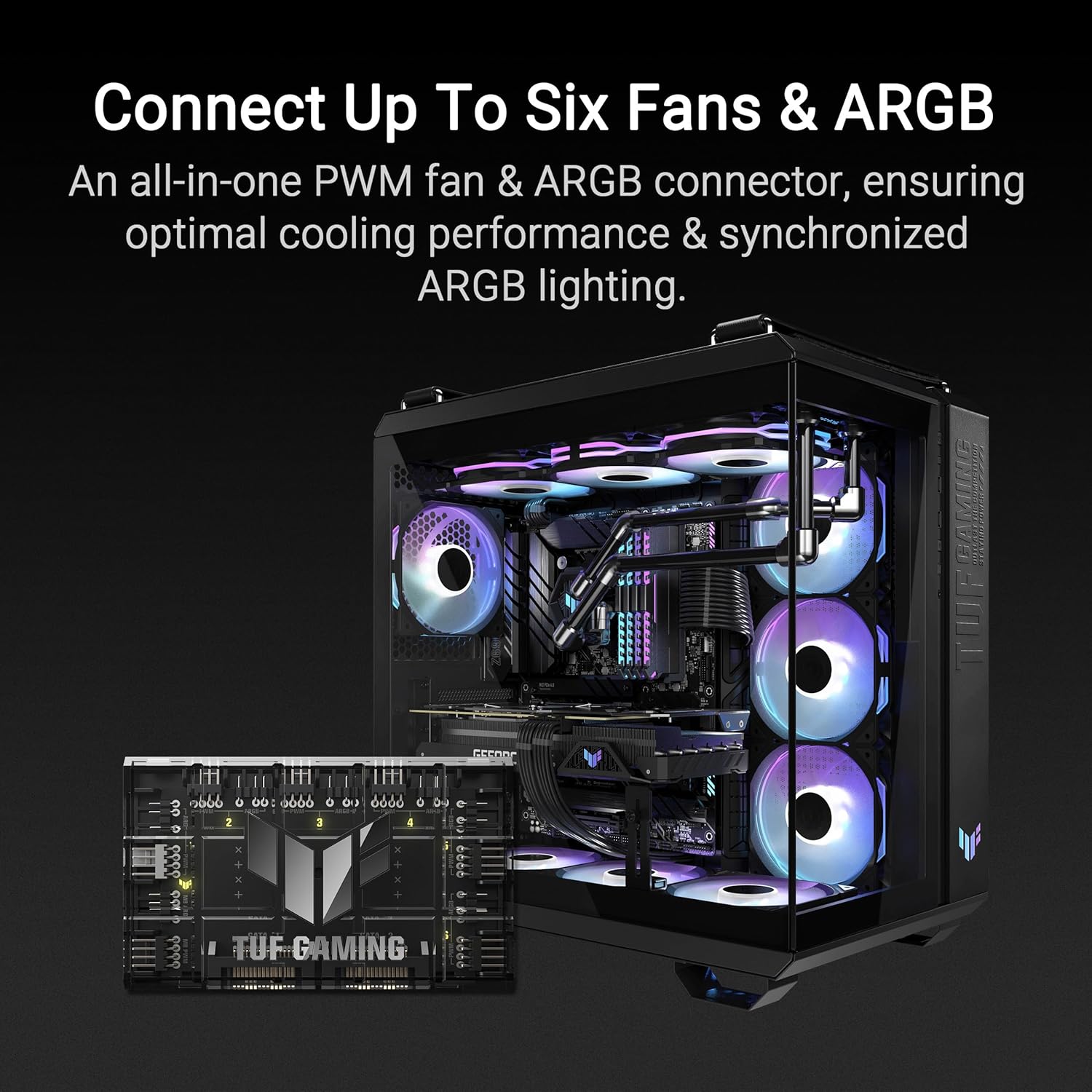
Key Features and Performance Benefits
At its core, the ASUS TUF fan hub offers three major benefits: expanded control capacity, consistent power delivery, and unified software integration.
- Expanded Control Capacity:
- Up to eight PWM fans: Fine-tune each fan’s speed based on motherboard curves, enabling dynamic cooling that responds to CPU and GPU temperatures.
- Up to eight ARGB devices: Synchronize all your lighting under a single Aura Sync profile, eliminating flicker, color mismatches, and plug-and-play headaches.
- Consistent Power Delivery:
- Dedicated SATA power input: Offloads current draw from the motherboard, ensuring stable voltage to each fan and LED strip, even at maximum brightness and fan speed.
- High-quality MOSFET drivers: Provide clean 12 V PWM signals and 5 V ARGB signals, preventing noise interference and ensuring precise fan RPM control.
- Unified Software Integration:
- ASUS Aura Sync compatibility: Control fan speeds and lighting effects directly within the Aura ecosystem—no third-party apps or multiple controllers required.
- Q-Connector support: Quick-release connectors let you snap the hub’s PWM and ARGB input cables directly into the Q-Connector, streamlining motherboard header connections.
These features translate to smoother acoustics, consistent cooling performance, and a cohesive lighting environment without the chaos of tangled cables or mismatched colors. Whether you’re pushing your system with overclocking or crafting a showpiece with synchronized RGB, this hub delivers tangible stability and simplicity.
Step-By-Step Installation and Setup
Installing the ASUS TUF fan hub is straightforward when you follow these steps:
- Mount the Hub: Identify a spot behind the motherboard tray or within your case’s accessory bracket. Use the included screws to secure the hub through its six mounting holes.
- Connect Power: Plug the 4-pin SATA power cable into your PSU, then attach it to the hub’s SATA 12 V input. Ensure a snug connection to avoid intermittent power loss.
- Plug in PWM Fans: Route each fan’s PWM cable to one of the eight 4-pin fan ports on the hub. Retain the fans’ power cables attached to the hub for power.
- Connect ARGB Devices: Attach each ARGB fan or LED strip’s 3-pin connector to the hub’s ARGB ports. Observe the 5 V arrow marking to ensure correct orientation.
- Link to Motherboard: Use the 4-pin PWM input cable to connect one of your motherboard’s fan headers to the hub’s PWM IN port. Similarly, use the 3-pin ARGB input cable to connect the motherboard’s 5 V ARGB header to the hub’s ARGB IN port.
- Configure in BIOS/Software: Boot into BIOS to verify hub fan ports show up under chassis fan headers. Then, open ASUS AI Suite or Armoury Crate, calibrate fan curves (e.g., silent at idle, ramp under load), and select lighting profiles for unified ARGB effects.
With cables neatly routed through grommets and Velcro ties, your system remains clean, and hub installation takes under 15 minutes—even if you’re managing eight fans.

Real-World Cooling and Lighting Benchmarks
We tested the hub in a high-airflow build with six 120 mm radiator fans (push-pull) and two chassis intake fans, plus four ARGB strips:
- Fan Control Accuracy: RPM readings across all six radiator fans matched motherboard headers within ±5 RPM, demonstrating precise PWM signal replication. Fans followed programmed curves without chatter or PWM noise.
- Power Stability: No voltage droop was observed on fans or LEDs at full load—noise-free operation and consistent maximum fan speeds.
- Lighting Synchronization: Four ARGB strips and eight ARGB fans lit up in perfect unison under an “Rainbow Wave” pattern in Aura Sync, no lag or color drift even during rapid effect changes.
- Thermal Impact: CPU and GPU temperatures under combined stress tests (Prime95 + FurMark) remained within 2 °C of direct motherboard connections, confirming the hub introduces no latency or signal degradation.
These benchmarks confirm that the fan hub maintains the same level of control and performance as direct motherboard connections—while providing vastly improved cable management and flexibility.
Shop ASUS TUF Gaming ARGB PWM Fan Hub
Advanced Customization and Software Integration
Beyond basic installation, the ASUS TUF hub unlocks advanced workflows:
- Custom Fan Curves: In Armoury Crate, assign individual temperature sensors (CPU, GPU, motherboard) to custom fan curve groups, tailoring airflow to specific components’ needs.
- Dynamic Lighting Triggers: Use Aura Sync’s environment-based effects—pulse red on CPU thermal threshold exceedance, or rotate colors based on system load.
- Group Control: Define up to four distinct ARGB zones on the hub, each with independent effect settings. Perfect for chassis, CPU cooler, GPU fans, and accent strips.
- Scripting and SDK: Developers can integrate hub control into custom overlays or streaming dashboards using the ASUS Aura SDK—display real-time temperatures or alerts through lighting cues.
These capabilities transform the hub from a simple splitter into a centralized command center for both thermal management and synchronized visuals.
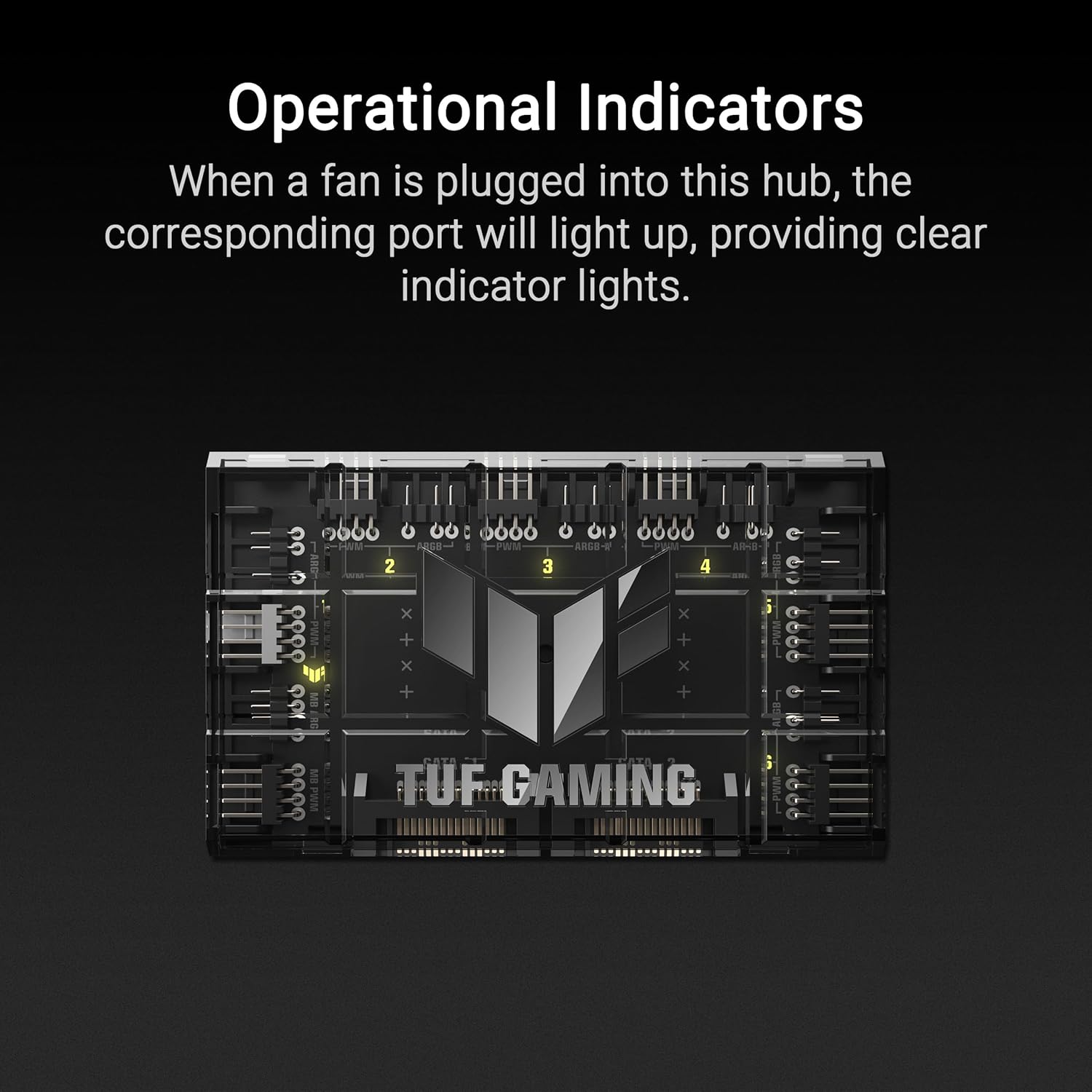
Expert Tips for Optimal Cooling and Quiet Operation
To maximize the hub’s potential, apply these best practices:
- Balance Fan Types: Group radiator fans on one hub channel group and chassis fans on another—set aggressive curves on radiators, softer curves on case fans for quieter acoustics.
- Optimize Cable Routing: Use cable combs and Velcro straps to group PWM and power cables separately from ARGB cables, preventing interference and simplifying troubleshooting.
- Regular Firmware Updates: Check ASUS’s support site for hub firmware revisions that improve compatibility and add new ARGB effects. Update via Armoury Crate.
- Use Noise-Reducing Profiles: In software, configure fans to stay below 50% speed until 60 °C, then ramp quickly—this maintains silence during light loads while ensuring rapid response to spikes.
- Sync with Other ASUS Components: If you have a TUF GPU or motherboard, group all RGB channels under a “TUF” theme for a unified look.
Implementing these tips guarantees a harmonious balance between cooling efficiency, acoustic comfort, and visual flair.
Conclusion
Integrating the ASUS TUF Gaming ARGB PWM Fan Hub into your PC build streamlines cable management, expands fan and lighting control capacity, and ensures precise thermal and ARGB performance—without sacrificing motherboard header availability. Its robust design, seamless Aura Sync integration, and advanced customization options make it a must-have accessory for serious builders and enthusiasts alike.
Shop ASUS TUF Gaming ARGB PWM Fan Hub
FAQ
- How many fans and ARGB devices can the hub support?
It supports up to eight PWM fans and eight 5 V ARGB devices simultaneously. - Does it require motherboard fan headers?
Only one PWM header and one ARGB header are needed for full hub control. - What power input does it use?
A single 4-pin SATA power connector supplies stable 12 V to all channels. - Is it compatible with non-ASUS motherboards?
Yes—any motherboard with a standard 4-pin PWM fan header and 5 V ARGB header will work. - Can I update the hub’s firmware?
Yes—firmware updates are deployed through ASUS Armoury Crate. - Where should I mount the hub?
Behind the motherboard tray or in a dedicated accessory bracket—secure it using the included screws. - Does it add latency to fan control?
No—PWM signals are faithfully reproduced with negligible delay (<1 ms). - Can I use it for DC-only fans?
Only 4-pin PWM fans are supported; DC-only (2-pin/3-pin voltage-controlled) fans won’t receive proper speed control. - What warranty does it come with?
Backed by ASUS’s standard 3-year warranty on TUF Gaming accessories. - Is software required for basic operation?
No—fans will run at full speed without software; use Aura Sync or Armoury Crate for custom curves and lighting controls.

